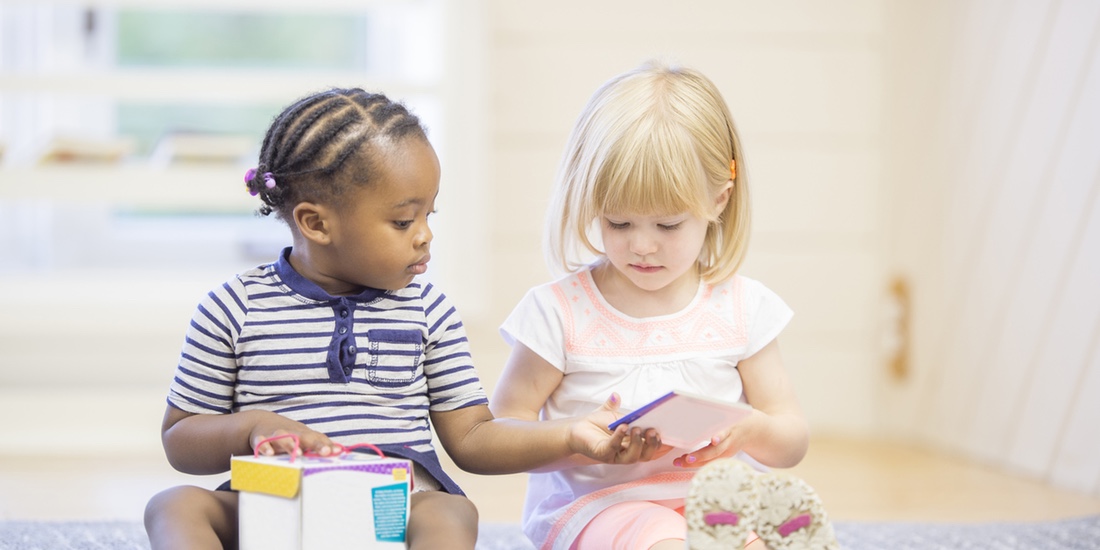Conflict is natural for preschoolers who are just learning about peers and group settings – it is expected, healthy and natural. So fear not, it is a positive part of their journey towards good citizenship, flexibility and understanding the needs of others.
Learn
Reasons for Conflict
- Conflict is an expression of how young children explore – with their bodies. Preschoolers are still working on ideas and words as a primary way of getting their needs met. So if something is interesting, children have an impulse to go get it. It’s one of the reasons that “sharing” may feel unnatural for young children.
- They see objects at rest and objects in motion very differently.
- An object at rest on the shelf – say a train – may speak to a toddler in some ways – they may know exactly what to do with it. But they don’t see it in action and understand all the things that can be done with it. That takes more symbolic thinking skill than they have yet. But when another person puts a train on a track and moves it along, that object is suddenly full of life. This is why, if you have three identical train cars, a child will likely show more interest in grabbing the one that’s in someone’s hand than the two on the shelf.
- Young children cannot really understand another person’s perspective – yet. This ability was labeled “Decentering” by Piaget, the ability to see something else at the center of the action than yourself. There is great debate and great variation as to when children can do this; rest assured, it’s generally not 2-year-olds.
Just Remember
- The ability to share and be generous takes time and maturity.
- It comes from learning to feel good about own needs, building comfort with peers and building empathy; it’s a complicated web of concepts and skill.
- Build the toolbox of sharing – of moral reasoning – one piece at a time.
- Give your child structured support, keep a relaxed, accepting attitude (not a sign of trouble or failure that your child wants everything for themself!)
- Be patient.
Do
What You Could Do and What You Could Say
- Set expectations and limits when helping your child through conflict – Children need definition and boundaries in order to feel safe and to be able to feel that they are capable.
- When sharing limited resources, the expectation is that we do have to share regardless of the type of sharing.
- It is expected that the handover will be peaceful and reasonable.
- Time limits and timers are helpful, depending on the situation.
- For example, “Would you like 3 minutes more or 5 minutes more?”
- Rules can be a good thing – Young children are egocentric; they’re focused on themselves. This implies it’s difficult for them to see things from another child’s perspective. Empathy and perspective-taking cannot be learned until a child is ready. So until your child is ready to internalize social experiences more deeply, rules can be effective. For example:
- Making a rule that “we take turns with our toys” for a young child may be more effective than explaining to them that their friend is mad and sad that they didn’t get a turn with the toy.
- Your child will more easily understand that the friend should get a turn because “taking turns” is a rule (vs. the friend should get a turn because they look disappointed and upset).
| Some Helpful Rules | What You Could Do and Say | Key Takeaways |
|
|
|
|
|
|
|
|
|
Quick Tips for When There is Conflict
- Ask your child first what is happening.
- Don’t assign blame.
- Focus on *your* response, not your child’s behavior.
*Adapted in partnership with Todd Wanerman.
